Aboriginal People Made Pottery And Navigated To Remote Islands Millennia Before Europeans Arrived
AncientPages.com - Pottery was largely unknown in Australia before the recent past, despite well-known pottery traditions in nearby Papua New Guinea and the islands of the western Pacific. The absence of ancient Indigenous pottery in Australia has long puzzled researchers.
The excavation in progress. Image credit: Sean Ulm
Over the past 400 years, pottery from southeast Asia appeared across northern Australia, associated with the activities of Makassan people from Sulawesi (this activity was mainly trepanging, or collecting sea cucumbers). Older pottery in Australia is only known from the Torres Strait adjacent to the Papua New Guinea coast, where a few dozen pottery fragments have been reported, mostly dating to around 1700 years ago.
Why has no evidence been found of early pottery use by Aboriginal people? Various explanations have been proposed, including suggesting that archaeologists simply weren’t looking hard enough. Well now, we’ve found some.
In new research, we report the oldest securely dated ceramics found in Australia from archaeological excavations on Jiigurru (in the Lizard Island group) on the northern Great Barrier Reef located 600km south of Torres Strait. Our analysis shows the pottery was made locally more than 1800 years ago.
Finding pottery at Jiigurru
Back in 2006, several pieces of pottery were found in Blue Lagoon on Jiigurru, 33km off mainland Cape York Peninsula.
Finding pottery at Jiigurru raised some big questions. How old was it? Was it made by local Aboriginal communities? Or was it traded in from elsewhere? If so, where did it come from? Was it from a European shipwreck? Or was it made by the famous Lapita people who colonised the islands of the southwest Pacific?
Our team excavated several more pieces of pottery from Blue Lagoon in 2009, 2010 and 2012.
Read more: In a first discovery of its kind, researchers have uncovered an ancient Aboriginal archaeological site preserved on the seabed
Preliminary analyses showed most of the pottery was made from local materials. However, despite a lot of work, our efforts to determine the age of this pottery were inconclusive and we were no closer to working out how old it is, or who made it.
In 2013 we went back to Jiigurru to excavate a shell midden on a headland near where the Blue Lagoon pottery was found. A shell midden represents a place where people lived, containing food remains (shells, bones), charcoal from campfires, and stone tools left behind.
Radiocarbon dating showed people started camping at this place some 4,000 years ago, making it the oldest site then known at Jiigurru. But no pottery was found.
A broader search
By 2016 the team had reached a dead end in investigating the few pieces of pottery we had. Instead, working in partnership with Traditional Owners, we turned the research program to the extraordinary Indigenous history of the whole of Jiigurru and began surveying all the islands.
In 2017 we began excavating a large shell midden at Jiigurru located during the surveys.
To our amazement, around 40cm below the surface we began to find pieces of pottery among the shells in the excavation. We knew this was a big deal. We carefully bagged each piece of pottery and mapped where each sherd came from, and kept digging.
The pottery stopped at about 80cm depth, with 82 pieces of pottery in total. Most are very small, with an average length of just 18 millimetres. The pottery assemblage includes rim and neck pieces and some of the pottery is decorated with pigment and incised lines.
Some of the pottery pieces excavated at Jiigurru. Steve Morton
The oldest pottery
But we had another surprise waiting for us.
The deepest cultural material was found nearly two metres below the surface, in levels we radiocarbon dated to around 6,500 years ago. This is the earliest evidence for offshore island use on the northern Great Barrier Reef.
The reef shells eaten and discarded in these lowest levels had been buried so quickly that they still have colour on their surfaces. Archaeological sites of this depth and age are uncommon anywhere around the Australian coast.
Radiocarbon dating of charcoal and shells found close to the pottery shows that it is between 2,950 and 1,815 years old, making it the earliest securely dated pottery ever found in Australia. Analysis of the clays and tempers shows that all of the pottery was likely made on Jiigurru.
We lowered a laser scanner into the completed excavation pit to document the dense collection of shells found in the walls. Ian J McNiven
What does it tell us that we didn’t already know?
The findings are clear evidence that Aboriginal people made and used pottery thousands of years ago.
The archaeological evidence does not point to outsiders bringing pottery directly to Jiigurru. Instead, the evidence shows that Cape York First Nations communities were intimately engaged in ancient maritime networks, connecting them with peoples, knowledges and technologies across the Coral Sea region, including the knowledge of how to make pottery.
Cultural interactions were common around the Coral Sea. Ian J McNiven
They were not isolated or geographically constrained, as once conceived.The results also demonstrate that Aboriginal communities had sophisticated watercraft and navigational skills in using their Sea Country estates more than 6,000 years ago.
What else don’t we know?
The Jiigurru pottery gives us new insight into Australia’s history and the international reach of First Nations communities thousands of years before British invasion in 1788.
Very little research has been conducted anywhere on eastern Cape York Peninsula. We think it is very unlikely that Jiigurru holds the only secrets to our country’s peopled past. What other cultural and historical surprises await to be found?
Provided by The Conversation
This article is republished from The Conversation under a Creative Commons license. Read the original article.
More From Ancient Pages
-
 Mystery Of The 1,700-Year-Old ‘Salt’ Mummy With Long White Hair
Featured Stories | Sep 14, 2016
Mystery Of The 1,700-Year-Old ‘Salt’ Mummy With Long White Hair
Featured Stories | Sep 14, 2016 -
 Ancient City Of Metsamor – Captured And Destroyed By Argishti I, The Ruler Of Urartu
Civilizations | Sep 11, 2015
Ancient City Of Metsamor – Captured And Destroyed By Argishti I, The Ruler Of Urartu
Civilizations | Sep 11, 2015 -
 Never-Ending Battle Of The Oak King and Holly King – Confrontation Of The Light And The Darkness
Celtic Mythology | Dec 17, 2021
Never-Ending Battle Of The Oak King and Holly King – Confrontation Of The Light And The Darkness
Celtic Mythology | Dec 17, 2021 -
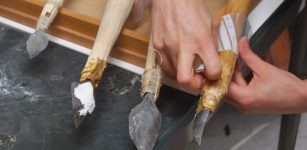 Oldest Known Spearthrowers Found At 31,000-Year-Old Archaeological Site Of Maisières-Canal
Archaeology | Nov 6, 2023
Oldest Known Spearthrowers Found At 31,000-Year-Old Archaeological Site Of Maisières-Canal
Archaeology | Nov 6, 2023 -
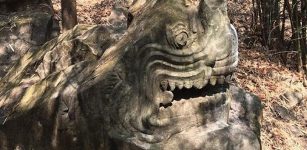 Ancient Statue Of Makara, Legendary Sea-Creature Found In Cambodia
Archaeology | Jan 29, 2020
Ancient Statue Of Makara, Legendary Sea-Creature Found In Cambodia
Archaeology | Jan 29, 2020 -
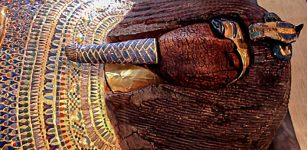 Dispute And Mystery: Strange Case Of The Tomb KV55 In The Valley Of Kings, Egypt
Civilizations | Oct 8, 2015
Dispute And Mystery: Strange Case Of The Tomb KV55 In The Valley Of Kings, Egypt
Civilizations | Oct 8, 2015 -
 4,000-Year-Old Tomb Altóir Na Gréine Rediscovered By Folklorist In County Kerry, Ireland
Archaeology | Jan 24, 2024
4,000-Year-Old Tomb Altóir Na Gréine Rediscovered By Folklorist In County Kerry, Ireland
Archaeology | Jan 24, 2024 -
 Why Did Sages And Shamans Repeatedly Visit The Mysterious Finnish Pirunkirkko Cave (Devil’s Church)?
Archaeology | Nov 27, 2023
Why Did Sages And Shamans Repeatedly Visit The Mysterious Finnish Pirunkirkko Cave (Devil’s Church)?
Archaeology | Nov 27, 2023 -
 Early Christian Landmark – Re-Evaluation Of Its Architecture And Practices
Archaeology | Aug 19, 2024
Early Christian Landmark – Re-Evaluation Of Its Architecture And Practices
Archaeology | Aug 19, 2024 -
 Triumphal Arch Of Roman Emperor Constantine And His Great Vision
Featured Stories | Jul 12, 2017
Triumphal Arch Of Roman Emperor Constantine And His Great Vision
Featured Stories | Jul 12, 2017 -
 Gog And Magog Prophecy In The Book Of Revelation
Biblical Mysteries | Oct 11, 2018
Gog And Magog Prophecy In The Book Of Revelation
Biblical Mysteries | Oct 11, 2018 -
 Evidence Of Biblical Kingdom Of Edom In Arava Desert – Discovered
Archaeology | Sep 23, 2019
Evidence Of Biblical Kingdom Of Edom In Arava Desert – Discovered
Archaeology | Sep 23, 2019 -
 Secret Ancient Knowledge Of Portals Leading To Unknown Realms -The Arrival And Departure – Part 1
Ancient Mysteries | Dec 1, 2021
Secret Ancient Knowledge Of Portals Leading To Unknown Realms -The Arrival And Departure – Part 1
Ancient Mysteries | Dec 1, 2021 -
 Remarkable 2,000-Year-Old Smoke-Absorbing Lamps Reducing Pollution Discovered
Archaeology | Nov 12, 2015
Remarkable 2,000-Year-Old Smoke-Absorbing Lamps Reducing Pollution Discovered
Archaeology | Nov 12, 2015 -
 Ogham: Unique Celtic Alphabet Used By Druids And Abandoned During Christian Era
Featured Stories | Jul 9, 2021
Ogham: Unique Celtic Alphabet Used By Druids And Abandoned During Christian Era
Featured Stories | Jul 9, 2021 -
 Mount Nemrut: ‘Throne Of The Gods’ – Mysterious Royal Tomb Surrounded By Gigantic Sculptures
Civilizations | Nov 16, 2018
Mount Nemrut: ‘Throne Of The Gods’ – Mysterious Royal Tomb Surrounded By Gigantic Sculptures
Civilizations | Nov 16, 2018 -
 Ganesha: Elephant-Headed God Of Knowledge, Learning, Literature And Scribe Of The Mahabharata
Featured Stories | Aug 17, 2016
Ganesha: Elephant-Headed God Of Knowledge, Learning, Literature And Scribe Of The Mahabharata
Featured Stories | Aug 17, 2016 -
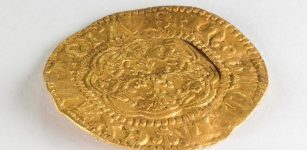 How Did Canada’s Oldest Coin Make Its Way To Newfoundland’s South Coast?
Archaeology | Nov 14, 2022
How Did Canada’s Oldest Coin Make Its Way To Newfoundland’s South Coast?
Archaeology | Nov 14, 2022 -
 Mysterious Sleeping Beauty Of Loulan Mummy Is Still Perfectly Preserved After 3,800 Years!
Civilizations | Oct 30, 2014
Mysterious Sleeping Beauty Of Loulan Mummy Is Still Perfectly Preserved After 3,800 Years!
Civilizations | Oct 30, 2014 -
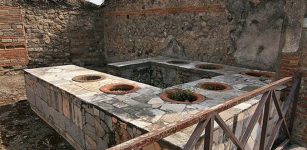 Thermopolium – Ancient Roman Restaurant Offered Fast Food But Was It A Good Idea To Eat There?
Ancient History Facts | Mar 16, 2018
Thermopolium – Ancient Roman Restaurant Offered Fast Food But Was It A Good Idea To Eat There?
Ancient History Facts | Mar 16, 2018




